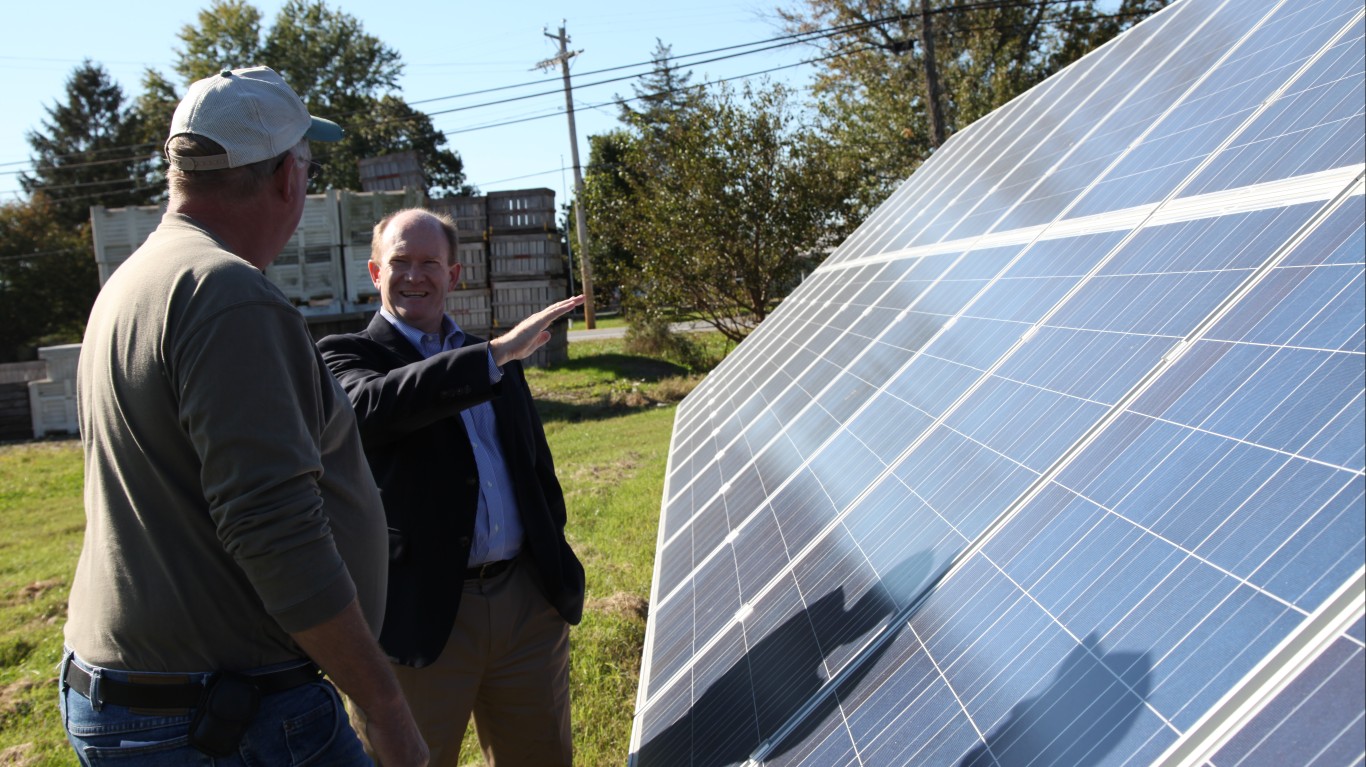
13. Delaware
> Potential jobs created under Inflation Reduction Act in 2030: 1 for every 273 people (3,692 total)
> Potential new jobs as a share of current unemployed population: 16.5%
> Unemployed population in 2022: 22,430 (4.5% of labor force)
> Energy-related carbon dioxide emissions in 2021: 12.9 metric tons per person (12.8% lower than avg.)

12. Georgia
> Potential jobs created under Inflation Reduction Act in 2030: 1 for every 272 people (40,112 total)
> Potential new jobs as a share of current unemployed population: 25.2%
> Unemployed population in 2022: 159,182 (3.0% of labor force)
> Energy-related carbon dioxide emissions in 2021: 11.5 metric tons per person (22.3% lower than avg.)

11. Oregon
> Potential jobs created under Inflation Reduction Act in 2030: 1 for every 272 people (15,873 total)
> Potential new jobs as a share of current unemployed population: 17.5%
> Unemployed population in 2022: 90,795 (4.2% of labor force)
> Energy-related carbon dioxide emissions in 2021: 9.1 metric tons per person (38.8% lower than avg.)

10. South Carolina
> Potential jobs created under Inflation Reduction Act in 2030: 1 for every 272 people (19,187 total)
> Potential new jobs as a share of current unemployed population: 24.9%
> Unemployed population in 2022: 77,048 (3.2% of labor force)
> Energy-related carbon dioxide emissions in 2021: 13.4 metric tons per person (9.8% lower than avg.)

9. Arizona
> Potential jobs created under Inflation Reduction Act in 2030: 1 for every 268 people (27,209 total)
> Potential new jobs as a share of current unemployed population: 19.7%
> Unemployed population in 2022: 138,128 (3.8% of labor force)
> Energy-related carbon dioxide emissions in 2021: 11.4 metric tons per person (22.8% lower than avg.)





